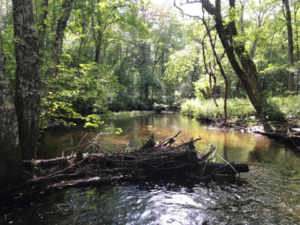-
NEIWPCC Commissioner John Sullivan Reflects on His Career
Fifty Years at the Boston Water & Sewer Commission John Sullivan, NEIWPCC commissioner and chief engineer of the Boston Water & Sewer Commission (BWSC), is featured in a new video
-
Nonpoint Source Conference Celebrates 50 Years of the Clean Water Act
Returning as an in-person event after being held virtually due to the pandemic, the 32nd Annual Nonpoint Source (NPS) Conference was held April 27-28 in Woodstock, Vermont. Acting as a regional
-
New Biotic Index Helps Resource Managers Assess Stream Health
Resource managers in Southern New England have a new tool to assess biological conditions and water quality in slow-moving streams. The index of biotic integrity (IBI) uses biomonitoring – the
-
The First Fully Integrated Sludge Composting System
Durham, New Hampshire Wastewater Treatment Facility By Nelson Thibault In the late 1970s, I was hired by a New Hampshire consultant engineering firm, Hoyle, Tanner & Associates (HTA), as onsite
-
NEIWPCC Announces Leadership Transition in South Portland Office
NEIWPCC has appointed Peter Zaykoski as the new program manager of the South Portland, Maine office, following the retirement of long-time manager Leeann Hanson. Zaykoski has been with NEIWPCC since
-
Interstate Waters Magazine Focuses on the 50th Anniversary of the Clean Water Act
NEIWPCC marks the 50th anniversary of the Clean Water Act (CWA) in the Spring 2022 issue of “Interstate Waters.” This landmark environmental legislation, which has defined how the nation’s water
-
National Tanks Program Has Cleaned Up 90% of Petroleum Releases
EPA Thanks Partners For Achieving Milestone in Latest Issue of “L.U.S.T.Line” More than 500,000 petroleum releases from underground storage tanks (UST) have been cleaned up since the establishment of the
-
Rewarding Jobs with a Great Mission: Clean Water Industry
Jeff Kalmes, superintendent of the Billerica Water Resource Recovery Facility in Billerica, Massachusetts, enthusiastically encourages viewers to consider a career in water resource recovery – also known as the wastewater
-
NEIWPCC Returns to In-Person Events with the Annual Northeast Aquatic Biologists Conference
Attendees’ face masks could not hide the beaming smiles underneath, as regional attendees at the Northeast Aquatic Biologists (NAB) Conference greeted each other after two long years of virtual collaboration.
-
Reflecting on 75 Years
Executive Director Susan Sullivan launches a new video to celebrate NEIWPCC’s 75th anniversary. Click here to view it on YouTube. Sullivan’s career spans more than three decades with NEIWPCC, where








